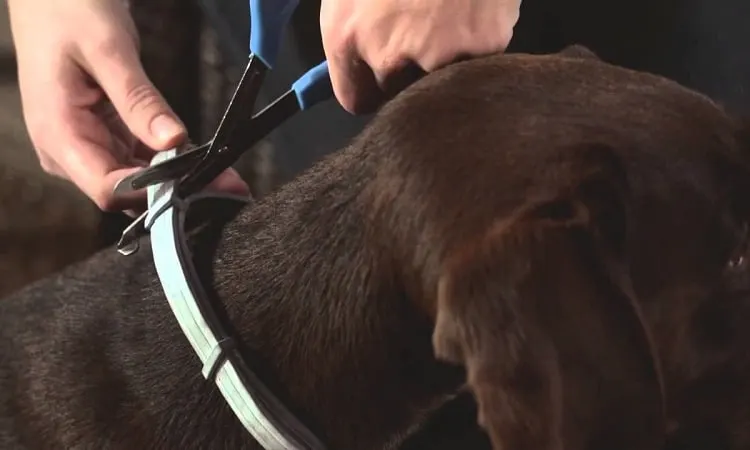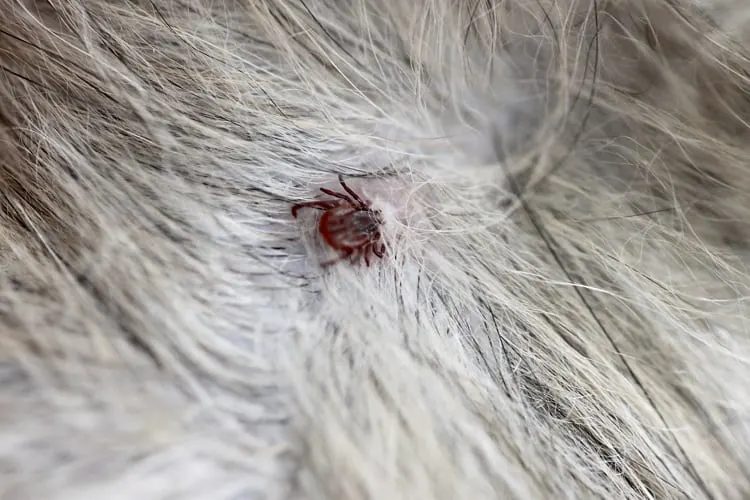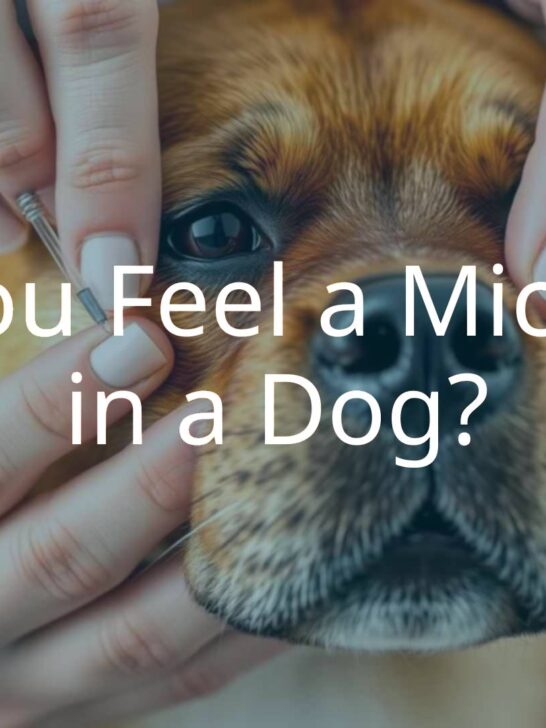How Long Does It Take For A Flea Collar To Work
If you’re reading this, chances are your dog is experiencing flea infestation, and you’re looking for some information on flea collars.
Well, you’ve come to the right place!
In this article, we’ll cover everything you need to know about flea collars, from how they work to their benefits and downsides. We’ll also share tips on choosing a suitable flea collar for your pup.
Time Required for a Flea Collar to Work

In general, most flea collars work and take effect within 24-48 hours of being put on the animal. Its effect is also affected by the type of collar used, the severity of the infestation, and the chemicals used.
It may take up to 2 weeks for the full effects of the tick control collar to kick in, especially if there is a severe flea infestation.
But eventually, the fleas will all be eliminated. And once it kills fleas, the collar will continue to protect your pet and slowly release the chemicals that can last up to eight months.
How Does a Flea Collar Work?

A flea collar is one of the most popular fleas and tick medications to keep furry friends free from small annoying insects.
The principle behind a tick collar is simple: they release a small amount of insecticide that spreads over the animal’s fur and skin, killing fleas on contact.
The active ingredients in these collars vary, but they typically include pyrethroids, synthetic chemicals designed to mimic the effects of natural pyrethrins, which come from the chrysanthemum flower.
It works by releasing the chemicals in small amounts over time. The chemical is absorbed through the flea’s skin and enters its bloodstream.
Once in the bloodstream, the chemical interferes with the flea’s nervous system, causing paralysis and death.
When used as directed, flea collars work and are safe for pets and humans.
Of course, not all fleas will be affected by the collar, as some may be resistant to the chemical, but it’s still a reasonably effective way to keep those pesky critters at bay.
Common Chemicals Found in Flea Collars

Here’s a more detailed rundown of the most common chemicals found in flea collars.
Propoxur
Propoxur works by causing paralysis in fleas. This active ingredient is used in everything from insecticides to contact lenses.
It typically takes about 24 hours for it to kill ticks. It isn’t just harmful to insects – it can also be dangerous to humans.
Exposure to high levels of propoxur can cause nausea, vomiting, and seizures. Children should not be allowed near a dog wearing a Propoxur-based flea collar.
Pyriproxyfen
Pyriproxyfen is an insecticide commonly used to control pests such as fleas, aphids, whiteflies, and thrips. It works by interfering with the production of flea eggs.
As a result, it can help to reduce the flea population over time.
Deltamethrin
Deltamethrin is a synthetic pyrethroid used to repel fleas and control different household pests, including cockroaches, ants, and silverfish.
This active ingredient is safe for humans and animals when used as directed, but it can be harmful if inhaled or ingested in large quantities.
It works by causing nerve damage and paralysis in insects, eventually leading to death.
Benefits of Flea Collars

Some major benefits of using a flea collar include its affordability, convenience, and safety. Let’s go over them one by one.
Easy to Use
Just put the collar on your pet and adjust it to fit snugly. The collar will release a steady stream of flea-killing active ingredients that will protect your pet for up to 8 months.
Plus, flea collars do not require any drying period before they are effective.
Available in Different Sizes
Flea collars come in different sizes to fit a variety of pets. The good news for pet owners is that most brands offering flea collars will provide a range of sizes, so you don’t have to be too exact.
And if you’re unsure what size to get, most manufacturers offer a sizing chart on their website or packaging.
Affordable
The price of the collar will depend on the brand, the size of the collar, and the features it offers. The average cost of a tick collar is between $5 and $15, although some collars can be more expensive.
Plus, flea collars are available at most pet stores and online retailers, so finding one to fit your budget should be easy.
Safe to Use
The collars are safe for both pets and humans. However, following the instruction manual carefully is crucial to avoid over-exposing your pet to the pesticide.
Convenient
Flea collars are also convenient because they do not require any particular application, storage, or care.
In addition, many flea and tick collars now come equipped with unique features such as tick prevention or mosquito repellent, making them an even more versatile tool for protecting your pet from pests.
Downsides of Flea Collars

There are benefits, but what about the drawbacks? Let’s see what owners should watch out for when putting a flea collar on their pets.
Can Be Dangerous
Before making a purchase, pet owners should be aware of some potential risks associated with flea collars.
For one thing, many flea collars contain toxic chemicals that can harm pets and humans if they’re not used properly.
Uncomfortable
Flea collars can be uncomfortable for your dog or cat. The tick collar is tight around the pet’s neck and can rub the fur incorrectly.
Skin irritation can worsen if you have a pet allergic to flea bites. If the collar is not fitted correctly, it can also cause your dog to choke.
Can Be a Nuisance
Fleas and ticks collars can sometimes fall off, or become loose, allowing fleas to infest your pet again.
5 Factors to Consider When Buying Flea Collars

Efficacy
When looking for a flea collar for your dog, you’ll want to consider its effectiveness. There are a lot of products on the market, and some claim to be the best.
Do your research and read reviews to see what other pet parents have to say about different collars. Ask your veterinarian for recommendations.
Safety
You’ll also want to ensure that your collar is safe for your dog. Some collars use chemicals that can harm your pet if they’re not used properly.
Ensure you understand the instructions before using any flea collar on your dog.
Also, take into account the activity level of your pet. If they’re constantly running and playing, you’ll want a comfortable collar that won’t rub them the wrong way.
Comfort
Your dog will wear the tick collar, so you’ll want to ensure it’s comfortable. Some collars can irritate your dog’s skin, so you may want to opt for a collar made of a softer material.
You’ll also want to ensure the collar is the right size for your dog. You don’t want to end up with a too-big or too-small collar.
Cost
Flea and tick collars can range in price, so you’ll want to choose one that fits your budget. There are some cheaper options on the market, but they may not be as effective as more expensive collars.
Keep in mind that you get what you pay for when it comes to flea collars.
Durability
If your pet spends a lot of time outdoors, you’ll want a waterproof collar that can withstand exposure to sunlight and other harsh elements.
You’ll also want to ensure that your flea collar is durable. Some collars only last for a few weeks, while others can last for months.
Conclusion
A flea collar is an excellent way to stock flea infestation, but you must choose the right one for your pet. We hope this article has helped you understand how flea collars work.
Keep in mind the several disadvantages mentioned here.
Dog Flea Collars FAQs
Below, we’ll go through some of the most common questions regarding flea collars.
How Often Should You Change the Flea Collar?
Ideally, changing your flea collar every 3-4 months would be best. It will help ensure that the collar’s chemicals remain effective against fleas.
However, if you live in an area with many fleas or your pet is susceptible to them, you may need to change the collar more frequently.
In addition to changing the tick collar regularly, it’s also essential to keep an eye on it and replace it if it shows signs of wear and tear.
If the collar is damaged, it may not be as effective at repelling fleas and ticks. Be sure to check the manufacturer’s instructions to see how often your particular flea collar needs to be replaced.
Can I Use a Flea Collar in Combination With Other Flea Treatments?

The short answer is yes, and you can use a flea and tick collar in combination with other flea treatments.
Flea collars work by releasing a small amount of insecticide that helps to kill fleas that come into contact with your pet’s fur. In fact, this may even be the best way to protect your pet from these harmful insects.
When used with other flea treatments, such as topical creams or spot-on treatments, flea collars can provide an extra layer of protection against these pests.
Just be sure to follow the manufacturer’s instructions carefully to avoid over-exposing your pet to insecticides.
Can Flea Collars Be Worn During the Dog’s Bedtime?
Yes, flea and tick protection collars are safe for dogs of all ages and can be worn day and night. Many pet owners find that a flea and tick collar is most effective and repels fleas when used 24 hours a day.
However, you should remember a few things when using a flea collar.
First, ensure that the flea and tick treatment collar is tight enough that your dog cannot remove it but not so tight that it is uncomfortable. Second, check the collar regularly to ensure it is not causing irritation or discomfort.
Resources:



















